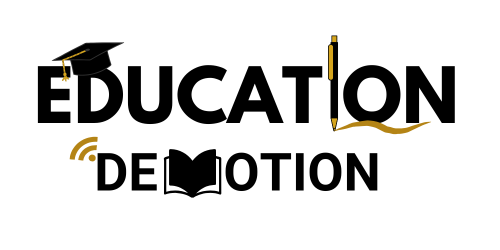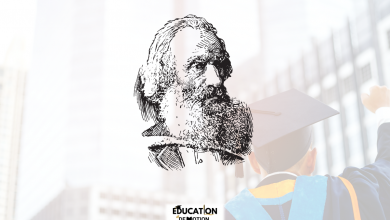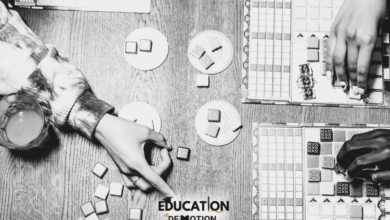The Educators Handbook: Your Ultimate Teaching Guide

Teaching is both an art and a science, requiring a blend of knowledge, skill, and passion. The educators handbook serves as a beacon for teachers navigating the complexities of modern education. Whether you’re a seasoned professional or just starting your teaching journey, this guide is designed to support you with practical strategies, effective classroom management tips, and innovative techniques to inspire learning.
Understanding the Purpose of the Educators Handbook
The educators handbook is more than just a collection of tips; it’s a comprehensive resource crafted to address the challenges educators face daily. From lesson planning to fostering student engagement, this tool is indispensable for those striving to make a meaningful impact in their classrooms.
Why Every Teacher Needs an Educators Handbook
In a world where education evolves rapidly, staying updated is crucial. The handbook helps educators:
- Develop effective teaching strategies.
- Adapt to diverse learning needs.
- Manage classrooms efficiently.
- Enhance professional growth.
With this resource in hand, teachers can focus on what matters most—empowering students to reach their full potential.
Key Components of an Educators Handbook
Lesson Planning for Success
A well-structured lesson plan forms the backbone of effective teaching. By outlining objectives, activities, and assessments, educators can ensure each session is purposeful. Use these strategies for efficient planning:
- Start with clear objectives: Define what students should learn by the end of the lesson.
- Incorporate varied activities: Combine discussions, group work, and hands-on activities.
- Allow flexibility: Be ready to adjust based on students’ responses or unexpected challenges.
Classroom Management Tips
A well-managed classroom creates a positive learning environment. Here’s how the educators handbook suggests handling classroom dynamics:
- Establish rules early: Set clear expectations from day one.
- Promote positive reinforcement: Recognize and reward good behavior.
- Address disruptions calmly: Maintain composure and handle issues privately when possible.
Innovative Teaching Techniques
Engaging students requires creativity. Some modern methods include:
- Blended Learning: Combine traditional instruction with online resources.
- Gamification: Introduce game-like elements to make learning fun.
- Inquiry-Based Learning: Encourage students to ask questions and explore answers collaboratively.
Supporting Diverse Learners
Today’s classrooms are diverse, with students bringing unique backgrounds and abilities. An effective educators handbook emphasizes inclusivity by:
- Differentiating instruction: Adjust lessons to cater to varying skill levels.
- Using visual aids: Support visual learners with charts, videos, and diagrams.
- Fostering collaboration: Encourage peer learning to build confidence.
The Role of Technology in the Educators Handbook
Technology has revolutionized education, and integrating it effectively is a key focus of the handbook. Teachers can leverage tools like:
- Learning Management Systems (LMS): Organize assignments and track progress.
- Interactive whiteboards: Make lessons more engaging with multimedia.
- Educational apps: Enhance learning through interactive activities and games.
Building Relationships with Students
At the heart of education lies the teacher-student relationship. The educators handbook offers insights into nurturing trust and respect:
- Show empathy: Understand students’ struggles and offer support.
- Encourage open communication: Create a space where students feel heard.
- Celebrate achievements: Recognize milestones, big or small.
Professional Development for Educators
Continuous learning is vital for educators to stay effective. The handbook emphasizes:
- Attending workshops: Gain new insights and techniques.
- Networking with peers: Share experiences and learn from others.
- Pursuing certifications: Enhance skills in specialized areas like special education or technology integration.
Challenges Educators Face and How the Handbook Helps
Teaching is rewarding, but it’s not without challenges. Common issues include:
- Burnout: The handbook suggests maintaining work-life balance and practicing self-care.
- Behavioral issues: Strategies for addressing misbehavior are outlined.
- Adapting to change: Guidance on navigating new curricula or technologies is provided.
How to Create Your Own Educators Handbook
While ready-made guides are helpful, personalizing a handbook ensures it aligns with your teaching style. Steps to create one include:
- Assess your needs: Identify areas where you need the most support.
- Compile resources: Gather articles, tips, and tools relevant to your subjects.
- Update regularly: Reflect on what works and revise as needed.
The Educators Handbook and Lifelong Learning
The educators handbook isn’t just a tool; it’s a mindset. It fosters lifelong learning, encouraging teachers to evolve alongside their students. By embracing this resource, educators can continually improve their craft, making a lasting difference in the lives of those they teach.
More About; University of Metaphysical Sciences
FAQs
How can the educators handbook improve teaching effectiveness?
The handbook provides practical strategies, tools, and techniques to enhance lesson planning, classroom management, and student engagement, making teaching more efficient and impactful.
What should it include?
Key elements include lesson planning tips, classroom management strategies, innovative teaching methods, resources for diverse learners, and guidance on professional development.
Is technology integration covered in the educators handbook?
Yes, the handbook offers insights into using tools like LMS, interactive whiteboards, and educational apps to enhance learning experiences.
How often should educators update their handbooks?
Regular updates are essential to stay aligned with evolving educational trends, student needs, and personal teaching experiences.
Can new teachers benefit from this book?
Absolutely! It’s an invaluable resource for new educators, providing guidance on foundational teaching practices and professional growth.
Why is inclusivity emphasized in the educators handbook?
Inclusivity ensures all students, regardless of their backgrounds or abilities, have equal opportunities to succeed. The handbook offers strategies to achieve this goal effectively.




